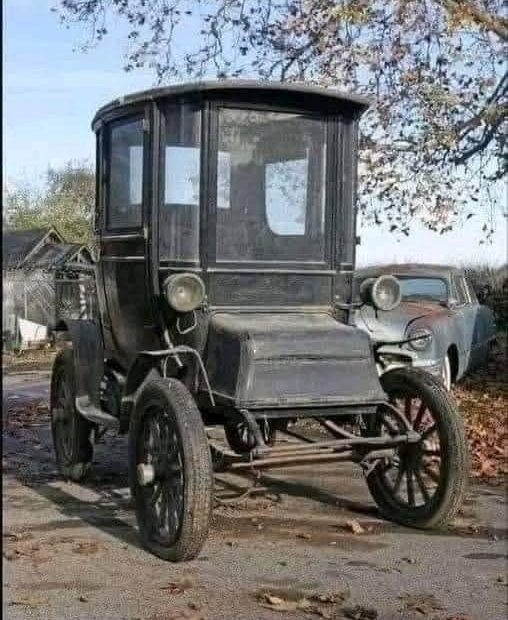The Detroit Model D Electric Car of 1910 was a remarkable piece of engineering for its time. Produced by the Detroit Electric Car Company, it epitomized the innovative spirit of early electric vehicles (EVs) and offered features that would rival its gasoline-powered counterparts in practicality and comfort.
Performance and Range
The Model D had a top speed of 32 km/h (20 mph), which was typical for cars of the era and sufficient for urban transportation. However, its standout feature was its impressive range of 340 km (211 miles) on a single charge. This was made possible by its substantial battery pack, which utilized lead-acid technology—the most advanced battery technology available at the time. The range was particularly appealing to city dwellers who needed reliable transportation without the noise, vibration, and exhaust fumes associated with gasoline cars.
Design and Features
The Detroit Model D was designed to be stylish and comfortable. It featured a coach-style body with a high roof, large windows, and ample seating. This allowed for an elegant and practical ride, catering primarily to wealthy individuals who appreciated its quiet operation and ease of use.
Unlike gasoline cars, electric vehicles of the time required no manual cranking to start. This ease of operation made the Model D especially popular with women and professionals who preferred a simpler and cleaner driving experience.
Popularity and Impact
During the early 20th century, electric vehicles were a common sight on city streets. By 1912, EVs like the Detroit Model D represented nearly 38% of the cars in the U.S. The Detroit Electric Car Company was a leader in this market, producing thousands of vehicles annually until internal combustion engines became more popular due to improvements in technology and the availability of cheap gasoline.

Historical Context and Role of Electric Cars in 1910
The early 20th century was a dynamic time in automotive history. Gasoline, steam, and electric vehicles were all competing for dominance. While gasoline-powered cars were better suited for long-distance travel and rural areas due to their higher speeds and range, electric cars like the Detroit Model D excelled in urban settings. Cities were the natural habitat for electrics, where smooth, clean roads and readily available charging stations catered to their needs.
In 1910, infrastructure for electric vehicles was surprisingly developed in many urban areas. Charging stations could be found in certain garages, and some wealthier individuals even had home charging setups. This convenience, coupled with the Model D’s silent operation and absence of exhaust, made it an appealing choice for city dwellers seeking a refined driving experience.
Innovations and Engineering
The Detroit Model D employed lead-acid batteries, which were relatively heavy but durable and reliable. While these batteries added significant weight to the vehicle, the car’s design compensated for this with robust suspension and a low center of gravity, improving stability and ride quality.
The motor was simple and efficient, requiring far less maintenance than gasoline engines of the time. Electric cars also avoided common challenges of internal combustion engines (ICE), such as frequent breakdowns and the laborious hand-cranking needed to start them. Instead, the Model D offered a turn-key solution—a technological convenience that foreshadowed the push-button ignitions of today.
Market Appeal
One of the most significant selling points of the Detroit Model D was its ease of operation, which made it particularly popular among women. Early marketing campaigns for electric cars often targeted women, emphasizing their reliability, cleanliness, and simplicity. Advertisements depicted electric cars as vehicles that eliminated the rough-and-tumble nature of driving, providing a more civilized alternative to gasoline cars.
Additionally, professionals like doctors favored electric cars due to their dependability and quick startup times. A doctor could park their vehicle and be ready to make house calls without the hassle of engine warm-ups or refueling stops.
